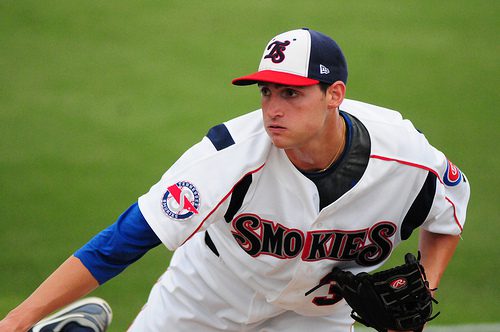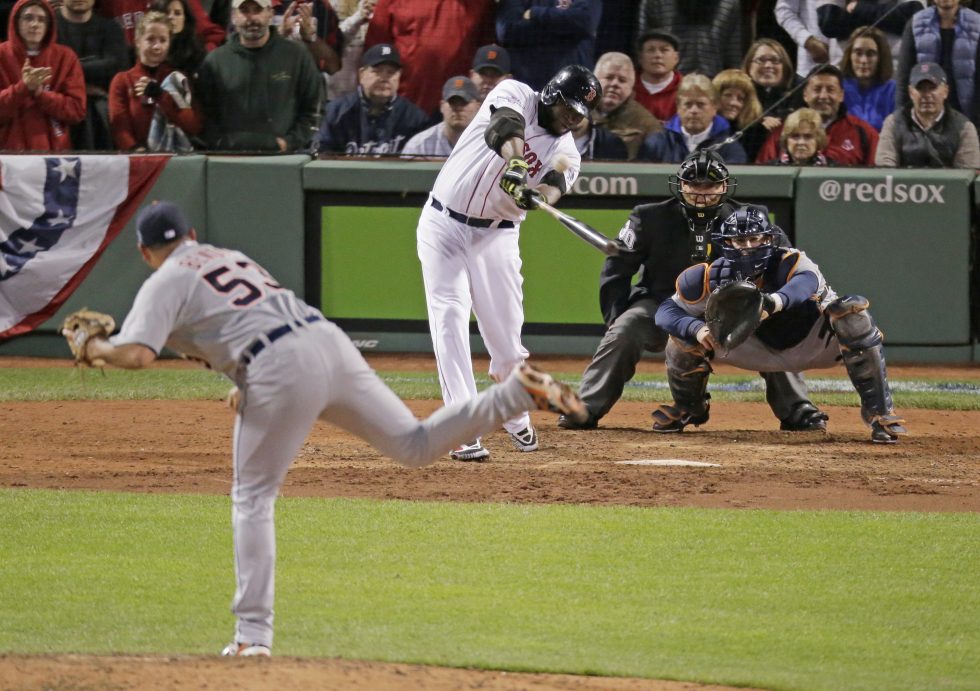

After four months of bickering, the Red Sox will receive RHP Chris Carpenter as compensation for Theo Epstein. While not a top prospect, Carpenter certainly isn’t irrelevant. Here’s everything you need to know about Boston’s new hurler.
DOB: December 26, 1985
Bats/Throws: Right/Right
Height: 6’4”
Weight: 215
From: Kent State (third round of 2008 draft)
Carpenter was drafted straight out of high school by Detroit in the seventh round of the 2004 draft but decided to go to college. Carpenter had Tommy John surgery during his freshman season at Kent State, then had another elbow procedure his sophomore year. His medical history was a big reason he fell to the Cubs in the third round in the ’08 draft. Carpenter pitched almost exclusively as a starter during the early parts of his professional career, but he is now working exclusively out of the bullpen. Scouts liked what they saw from him as a reliever.
Stuff: Carpenter’s four-seam fastball sat between 91-94mph as a starter and is mostly 95-97mph now that he can go full bore in short stints out of the bullpen. He’s touched triple digits before. The fastball doesn’t have a lot of movement, but Carpenter’s height allows him to pitch on a pretty extreme downward plane which makes it tough for hitters to elevate the ball. Carpenter should induce plenty of grounders.
Carpenter’s secondary stuff needs work, but at 26 years old, it’s unlikely he makes strides. He has an 82-85 mph breaking ball that looks like a slider, but Carpenter actually calls it a curveball, so we’ll call it a slurve. It is inconsistent and it movement isn’t always as sharp and devastating as you would like to see. His command of it is inconsistent.
The tertiary offering is a straight change-up with velocity in the mid to high 80s. It’s not a good pitch. He might have pronounced splits in the big leagues without anything in his repertoire to keep lefties off balance.
Mechanics: There’s a little bit of effort in Carpenter’s delivery (that’s to be expected from a guy who touches 100 mph on the radar gun), and its possible it may have been the cause of his elbow trouble in the past. Carpenter hasn’t had any injury problems since turning pro, so maybe he’s past the injury bug for good. Carpenter needs to repeat his delivery better (many tall pitchers have this problem), and his inability to do so causes him to struggle with control in spurts. His front foot doesn’t always land in the same spot. Sometimes it land toward the third base side of the plate and he has to throw across his body to get the ball to the plate. This probably isn’t good for his arm.
Prognosis: A nice, middle-relief arm
Video bonus: Chris Carpenter faces Bryce Harper




